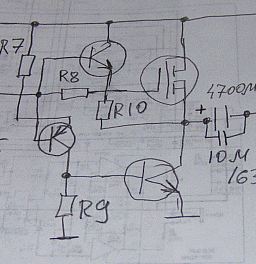Ethan,
Can you tell something about the application you shall use this "lardge headroom" FET-follower for.
It is easy to get the haedroom with high supply voltage, but usual JFET:s can not handle very high "Vds" voltage, (normally 25 to 40 volt) so it is important to be careful when you use them near the "max Vds limit value"
Ok, you can add a extra JFET as a "floating cascade" on the drain of the "normal" source follower JFET, to divide the voltage between both of them.
(or as the guys have talk about here before, to use some type of a " White JFET follower")
But if you use a MOSFET as a soure follower, you can run it on a very high voltage, (IRF510, Vds=100v or IRF610, Vds=200v) and get a huge headroom/swing, and if the PSU can give lardge current, you can load a MOSFET a lot.
--Bo







































